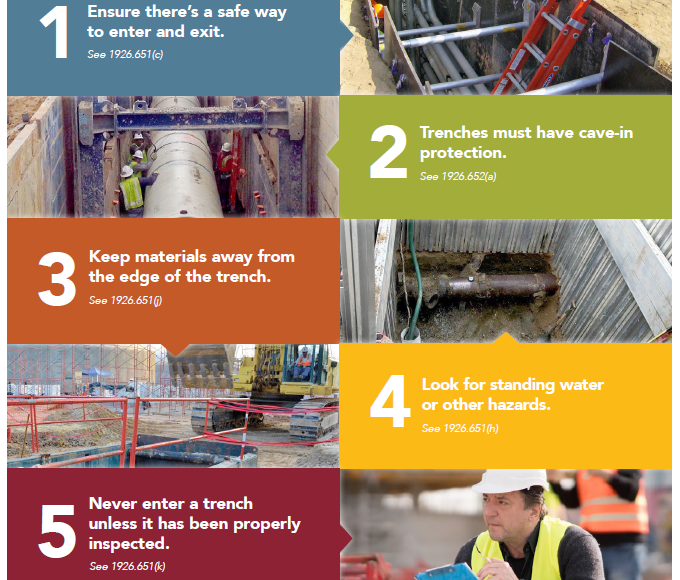The primary hazard of trenching and excavation work is employee injury from a cave-in. Before workers enter a trench, a soil analysis should generally be conducted to determine the appropriate employee protection methods such as sloping, benching, shoring or shielding. Employers should also consider potential struck-by hazards associated with heavy equipment, falling loads, and public vehicular traffic in close proximity to the excavation operations. Also consider potential hazards from undermining sidewalks and buildings. Other unsafe conditions that may be encountered include hazardous atmospheres and electrical hazards from overhead and underground power lines. These five key trench safety tips will help keep workers safe:
- Ensure that there’s a safe way to enter and exit
- Ensure trenches have cave-in protection
- Look for standing water and test if atmospheric hazards are or may be present
- Keep materials away from the edge of the trench
- Never enter a trench unless it has been properly inspected by a competent person
See OSHA’s Trenching and Excavation Construction eTool
Upcoming OSHA #3015 Excavation, Trenching, and Soil Mechanics Classes

